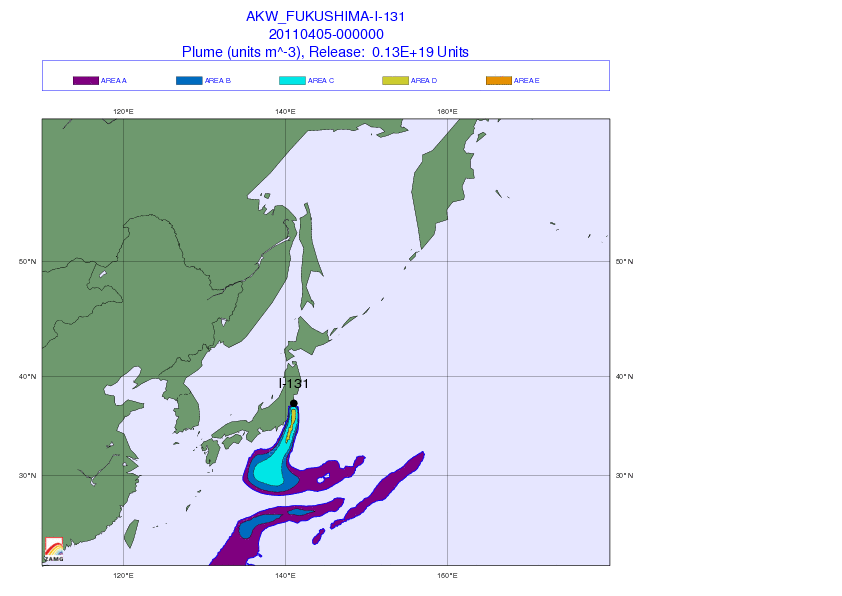It doesn't look pretty on April 7. The only place that's safe from the plume seems to be the northern half of Hokkaido. Everywhere else, even Okinawa may be covered, though very low level. South Korea and part of North Korea may be covered.
Their forecast is here (in German).
戦争の経済学
-
ArmstrongEconomics.com, 2/9/2014より:
戦争の経済学
マーティン・アームストロング
多くの人々が同じ質問を発している- なぜ今、戦争の話がでるのか?
答えはまったく簡単だ。何千年もの昔までさかのぼる包括的なデータベースを構築する利点の一つは、それを基にいくつもの調査研究を行...
11 years ago



 Tokyo Time
Tokyo Time
![[Most Recent Quotes from www.kitco.com]](http://www.kitconet.com/charts/metals/gold/t24_au_en_usoz_2.gif)


2 comments:
Thank the Gods for the internet! I bet TEPCO wants to start research into an Internet "off switch" as soon as they can start ignoring Fukushima. The Japanese need to go all "internet Egyptian" on the nuclear regulators and industry that allowed this to happen. The Japanese people should call for a "Tooth fairy" survey for all the children of tooth bearing age in the downwind areas for the next few decades. An independent study should help detect the actual contamination levels people are being exposed to.
"Why study baby teeth?
Since their inception, nuclear power plants and bomb facilities have been emitting fission products through accidental releases and through regular allowable emissions that the government classifies as below regulatory concern.
Radioactive Strontium-90 (Sr-90) is one of these elements, and one of the deadliest. The chemical structure of Sr-90 is so similar to that of calcium that the body gets fooled and deposits Sr-90 in the bones and teeth where it remains, continually emitting cancer-causing radiation.
Most of the strontium in the baby teeth is transferred to the fetus by the mother during pregnancy. Because we know when and where the baby was born, and where the mother lived while carrying, we can accurately determine when and where radioactivity was absorbed from the environment.
http://www.radiation.org/
http://www.radiation.org/projects/tooth_fairy.html
http://www.radiation.org/press/090828_pressrelease_IndianPoint.html
BTW, where is all the Sr-90 from fukushima? It has to be in the fuel rods has it been reported?
"Where can strontium-90 be found and how is it used?
Strontium-90 is found in spent fuel rods in nuclear reactors and is considered a waste product. It is found almost everywhere in small amounts, due to past nuclear accidents and fallout from nuclear explosions. Strontium-90 is a part of polluted soils at sites where nuclear fission was used, including research reactors and nuclear power plants."
"How can people be exposed to strontium-90?
It is unlikely that people will be exposed through breathing, drinking, or touching strontium-90. Food and drinking water are the largest sources of exposure to strontium-90. Some strontium-90 gets into fish, vegetables and livestock. It can also be found in grain, leafy vegetables and dairy products. However, the amount of radioactive strontium taken in by most people is small, unless they eat food that was grown on a waste site polluted with radioactive strontium."
www.dhss.delaware.gov/dph/files/strontiumfaq.pdf
Thanks, Robbie, for good information, as always. I will mention that on my Japanese blog.
I think I've seen the reference to strontium once in relation to Fukushima accident. They are not telling what they are detecting, under the "guidance" from the government's Nuclear Safety Agency, until they are absolutely sure (like several months later, probably).
Post a Comment